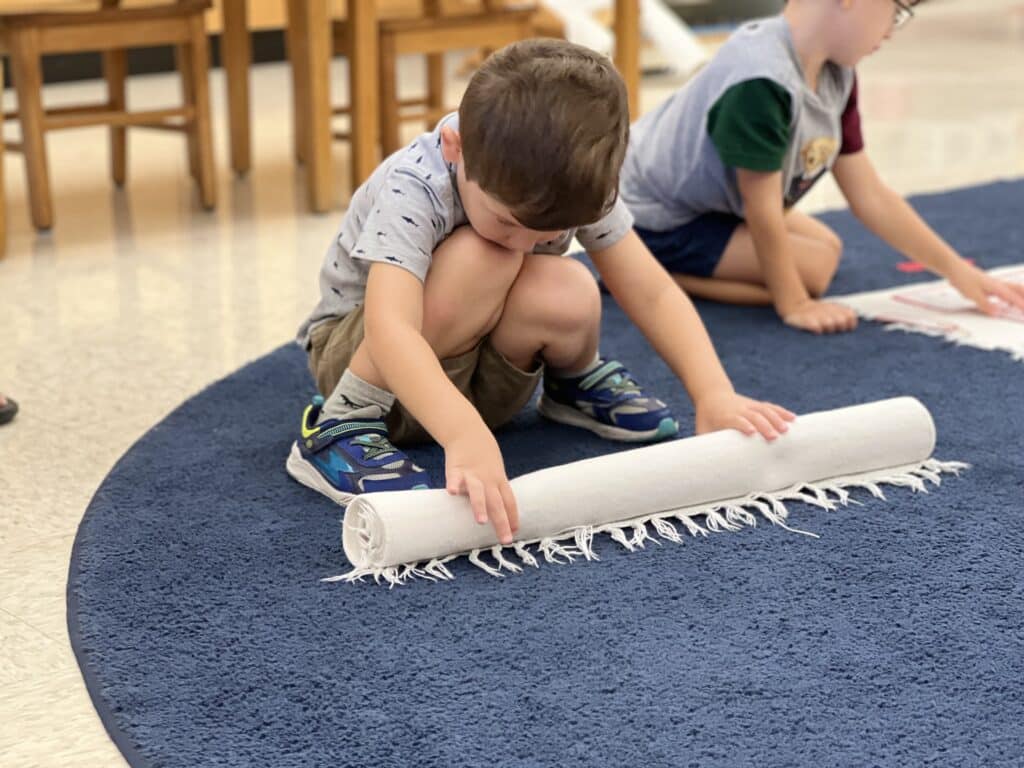by Theresa Powers, Program Director
There are specific phrases that you hear when people describe Montessori classrooms, and “freedom within limits” is one that may seem contradictory at first. However, when you see children in a Montessori environment working independently with autonomy to make choices about their tasks as they interact with grace and courtesy towards each other and their teachers, you are seeing a classroom that has freedom within limits in effect.
Using a Primary classroom as an example, freedom is what’s visible at first glance, as children choose work from shelves and carry it to their desks, head outside to the patio to work on a painting, or help themselves to a snack. Children are free to move about the classroom, and to work on things as long as they desire. Primary classrooms are bustling with activity – but not every child is doing the same thing at the same time, and there are many transitions going on with each child as they select work and make choices.
What may not be visible are the “limits.” And the “limits” are what makes a Primary classroom truly organized and harmonious, as children “choose” work that they have already had lessons on, they know the protocol for putting on an apron and preparing to paint because they have learned it previously, and they have also had specific lessons on how to gather their snack, including how to walk politely around the room and carry things carefully. Limits in this case means that the expectations have been clearly set, and routines and procedures have been carefully taught.
Sometimes people unfamiliar with Montessori philosophy think that it’s sort of a free-for-all or that it’s the total opposite – extremely strict. The design of a Montessori classroom is neither – instead, it allows for children to do what they like because they like what they do – and they have been given inviting, right-timed lessons in an environment carefully prepared for their development. Freedom within limits isn’t contradictory in Montessori philosophy as the guidelines established and the structure provided allows children to develop inner discipline and independence and thus have freedom to make choices.

